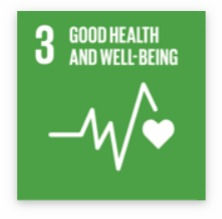Vulnerable Migrants, the COVID-19 Pandemic, and International Business
- Heidi Wechtler
- Apr 30, 2023
- 4 min read
Updated: Jan 28, 2025
A Vicious Cycle, with Eun Su Lee, Chiara Berardi and Chris Brewster

Credit: This poster is part of an awareness raising campaign, 'Real Aussies say welcome' started by Adelaide street artist, Peter Drew. It features an image of Monga Khan with the word 'Aussie' underneath.
Highlights
Although migration has long been studied in other academic disciplines, the scholarly focus on migrants in international business as crucial agents of change in organizations is comparatively recent. During the recent pandemic, migrants in many countries were particularly at risk, in both their health and their economic situations, as most countries adopted nationalistic approaches to managing the pandemic. In this chapter, we examine the mechanisms through which ‘precarious’ or vulnerable international migrants got trapped in a vicious cycle of nationalistic approaches to the pandemic. Due to language barriers, lack of recognition of qualifications, or discrimination, some migrants are forced to accept the first available jobs for survival reasons, rather than career prospects. These jobs are typically at the frontline, such as in farm and care work, and cannot be done remotely, posing higher risks of exposure to the COVID-19 virus. The pandemic also added another layer of sinophobia, xenophobia, and general anti-migrant sentiment. Overall, the lack of support to migrants had repercussions for individuals’ economic, social, health, and eventually career trajectories. The lived experiences of these migrants therefore will have future implications for business practices and scholarship. We conclude by summarizing some of these business implications.
Sustainable Development Goals



Find

Table of contents
Foreword. Peter J. Buckley
Chapter 1. The Kaleidoscope of Global Migration: International Business Perspectives in a Turbulent World. Audra I. Mockaitis
THEME I. Migration Landscapes in International Business.
Chapter 2. Vulnerable Migrants, the COVID-19 Pandemic, and International Business: A Vicious Cycle. Eun Su Lee, Heidi Wechtler, Chiara Berardi and Chris Brewster
Chapter 3. The COVID-19 Pandemic: Immigration Policy Changes and Challenges. Masud Chand
Chapter 4. Social Contagion and Migration: Sources and Implications of Migrant Ambivalence. Helena Barnard and Graham Nash
THEME II: Navigating the terrain of language and culture.
Chapter 5. Migrants, Language, and Internationalization of Small and Medium-sized Enterprises: A Literature Review. Johanna Niskavaara and Rebecca Piekkari
Chapter 6. Dissecting Generations of Migrant Identities within a Diaspora. Audra I. Mockaitis and Lena Zander
Chapter 7. Dual Perspectives: Immigrants’ Comparisons of Host and Home Countries’ Management of the COVID-19 Pandemic Emphasize the Salience of Cultural Differences. Ariane Froidevaux and David J.G. Dwertmann
Chapter 8. Can Intentions to Migrate be Explained through Individual Values? An Exploratory Study in Lithuania. Vilmantė Kumpikaitė-Valiūnienė, Audra I. Mockaitis, Jurga Duobienė, Ineta Žičkutė and Vilmantė Liubinienė
Chapter 9. From Working Hard to Being Hard Working: The Maintenance and Mobilization of Cultural Capital among Finnish Migrants in Florida. Johanna Raitis, Riika Harikkala-Laihinen, Niina Nummela and Eriika Paavilainen-Mäntymäki
Chapter 10. [Adult] Third Culture Kids: Why Do Early Life International Experiences Matter? Mireka Caselius and Vesa Suutari
THEME III: Leveraging and managing migration in the international firm.
Chapter 11. Exploring the Missing Links between International Business and Domestic Migration: The Case of China. Mingqiong Mike Zhang, Jiuhua Cherrie Zhu, Peter J. Dowling, and Di Fan
Chapter 12. The Value of Migrants for International Joint Ventures. Julia Mittermayr, Vera Kunczer and Jonas Puck
Chapter 13. Online Organizational Inclusion of Migrants in MNCs: Overcoming Cultural and Linguistic Barriers Virtually. Charlotte Jonasson and Jakob Lauring
Chapter 14. A Balancing Act in Times of Crisis – Inclusion at Work and Careers of Migrants in Austria. Petra Aigner, Almina Bešić and Christian Wenzler
Chapter 15. Migrant Inclusion and Wider Workforce Well-being: Understanding the MNE Challenges and Solutions through the Diversity Climate Lens. Christina L. Butler, Anna Paolillo and Vittorio Edoardo Scuderi
THEME IV: Migrants as an international business resource.
Chapter 16. Skilled Migrants: Stimulating Knowledge Creation and Flows in Firms. Pallavi Shukla and John Cantwell
Chapter 17. How Migration Enhanced a Mexican MNC’s Socially Embedded Capability. Anabella Davila
Chapter 18. Female Diasporans and Diaspora Networks: A Neglected Resource for Business? Maria Elo, Ilia Gugenishvili and Maria Ivanova-Gongne
Chapter 19. Non-ethnic Inventor Sourcing of Immigrant Knowledge: The Role of Social Communities. Larissa Rabbiosi, Francesco Di Lorenzo, Anu Phene and Paul Almeida
THEME V: The migrant’s journey.
Chapter 20. Unfolding the Dynamics of Refugees' Entrepreneurial Journey in the Aftermath of Forced Displacement. Solomon Akele Abebe and Ziad El-Awad
Chapter 21. Supporting Skilled Migrants’ International Career Success across the Micro, Meso, and Macro Levels. Marian Crowley-Henry, Shamika Almeida, Santina Bertone and Asanka Gunasekara
Chapter 22. Career Capital Development of Highly Skilled Self-initiated Expatriates. Rodrigo Mello and Vesa Suutari
Chapter 23. Expatriates’ Quality of Life During the Pandemic: Two Sides of the Same Coin. Anh Nguyen and Maike Andresen
Chapter 24. “Bringing It All Back Home”: Capital Utilisation of Irish Repatriates in the Irish SME Animation Industry. Adele Smith-Auchmuty and Edward O’Connor
Cite
Lee, E. S., Wechtler, H., Berardi, C. & Brewster, C. (2023). Vulnerable Migrants, the COVID-19 Pandemic, and International Business: A Vicious Cycle, in The Kaleidoscope of Global Migration: International Business Perspectives in a Turbulent World, edited by Mockaitis, A. & O’Connor, E.. Palgrave edition.



Comments